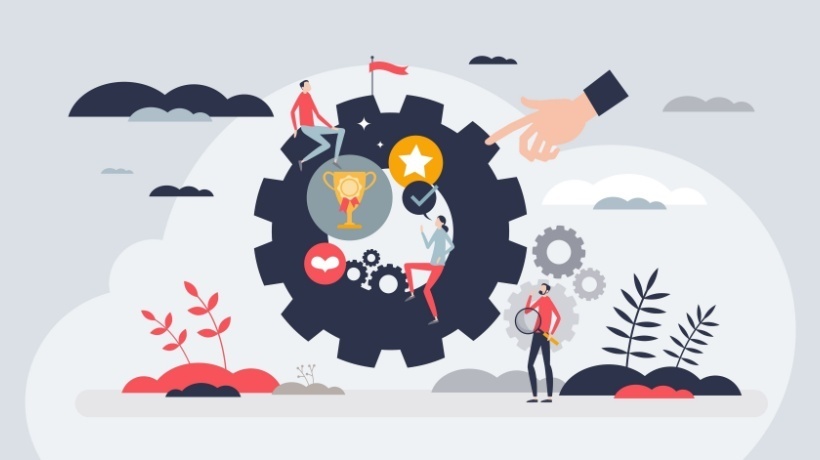What Do Employees Want? That's The Big Question
The digital age has ushered in a new era of expectations, where agility and adaptability hold equal importance. What was considered a hallmark of achievement in the 90s no longer holds the same weight in today's tech-infused era. Digital natives now constitute the backbone of the workforce, bringing with them a unique set of expectations and learning preferences that ought to be met. And so, to flourish in this evolving environment, companies find themselves at a critical juncture, compelled to reevaluate their traditional approaches to employee development and corporate learning. It is no longer just an option but a necessity for organizations to adapt to this new paradigm.
How To Understand Your Employees' Learning Styles And Priorities
To keep your employees engaged and help them reach their full potential, first, you need to understand their learning priorities and styles.
1. Adapt Content To Their Needs
For today's workforce, technology is their trusty companion. Respect your employees’ desire for mobility and convenience by offering content that works on any device. Short, bite-sized lessons in video or podcast form are ideal. Give employees options to choose content that matches their interests and goals. Some may prefer interactive scenarios and simulations, while others want straight-up lectures or readings.
2. Encourage A Culture Of Lifelong Learning
Cultivate an atmosphere where learning is an ongoing journey, and employees are encouraged to embrace new skills willingly. Motivate participation in optional learning initiatives while sweetening the deal with incentives like badges or rewards. Meeting your team where they stand and allowing them the autonomy to steer their own development paves the way for growth that advances the ship further.
Comprehensive Training And In-Depth Mentoring
L&D teams are often faced with an indispensable challenge—striking the right balance between comprehensive training and in-depth mentoring. The importance of achieving this equilibrium cannot be overstated. It's a linchpin for organizations to deliver a well-rounded education to their teams while simultaneously nurturing their professional and personal growth.
Comprehensive training, like online courses and video tutorials, allows employees to learn foundational skills and company processes on their own time. This self-guided method is ideal for:
- Onboarding new hires and interns,
- Cross-training existing staff on fundamentals,
- Educating a large group on policy or system changes.
However, comprehensive training can sometimes lack nuance and fail to address specific questions. It also cannot replace human interaction and guidance.
While training focuses on imparting skills, in-depth mentoring provides focused support for complex topics or skills that benefit from human expertise. This can be best for:
- Developing leadership abilities,
- Gaining advanced technical or soft skills,
- Solving challenging problems.
When both training and mentoring are used in tandem, the results can be phenomenal. Employees become adept at handling complex tasks, and managing teams, and eventually become natural leaders. The key is understanding which topics are best suited to self-guided learning and which require the human touch.
Addressing Learning Retention In Employees
Now, once you’ve invested in new skills and knowledge for your teams, you’ll want to make sure that information sticks. Here are a few strategies you could use to boost retention capacities.
- Set specific, measurable goals for learning
Don’t just tell employees to "get better at data analysis," or "improve communication skills." Set concrete goals, like "analyze sales data to identify three key insights each quarter," or "conduct two client meetings and one internal presentation each month." Clear targets will keep learning top of mind. - Reinforce learning through repetition
The "forgetting curve" shows we lose 70% of new information within 24 hours if we don’t actively recall and apply it. Provide opportunities for employees to repeat and re-engage with new skills, through coaching, mentoring, job shadowing, or regular knowledge checks. - Review and refresh
Don’t assume learning ends once a new skill has been introduced. Circle back regularly to reinforce key concepts, provide updated information, and ensure knowledge is still being applied on the job. Refreshers could include short "lunch and learn" sessions, newsletters, online modules, or informal quizzes.
Respecting Employee Priorities
Understanding and respecting employee priorities isn't just a superficial nod to the modern workplace, the kind that would magically solve all productivity-related hassles. It's no longer enough to provide a standardized training regimen and hope it fits everyone. Today's workforce is a mosaic of individuals with distinct backgrounds, talents, and objectives.
1. Offer Choices
Rather than mandate a single approach, offer options like self-paced eLearning, live virtual classes, coaching, or mentoring. Let employees choose what works for their needs, learning styles, and schedules. Some may prefer to learn independently, while others value real-time interaction.
2. Make Learning Personal
Use data and analytics to gain insight into individuals’ knowledge, skills, interests, and career goals. Then, provide personalized recommendations and learning paths. For example, if an employee wants to advance into a leadership role, suggest courses on management, communication, or critical thinking.
3. Incentivize And Reward
Offer rewards and recognition for completing learning programs. This could include bonuses, extra paid time off, public shout-outs, or badges/points that accumulate for learning milestones. Incentives motivate employees and demonstrate that you value their growth and development.
4. Goal-Setting
Work with employees to set SMART (Specific, Measurable, Achievable, Relevant, Time-bound) goals to help them gain a comprehensive understanding of what they need to achieve and by when. For example, a SMART goal could be, "Within six months, improve data analysis skills to contribute to better data-driven decision-making."
Bridging The Generational Gap In Learning Cultures
These fresh-faced individuals are filling up our spaces and spirits with their youth, exuberance, and optimism. While this can be great for our office karaoke sessions, it presents a unique challenge for organizations trying to establish a solid learning culture. Unlike their predecessors, these young folks have grown up in a digital era where information flows freely, tech evolves rapidly and the pursuit of constant learning is a way of life. So what do you do? Make learning relevant and ongoing.
Modern learners want to know why certain skills matter. Highlight how new knowledge and skills directly impact employees' roles. Also, learning shouldn't stop after onboarding. Continually evaluate skills gaps and provide opportunities for growth to keep them engaged. Another approach could be encouraging peer-to-peer learning. Sure, there's value in traditional lectures and training sessions, but this demography thrives on social learning. Encouraging them to teach and learn from one another will create a strong learning community where everyone is a teacher and a learner.
Remember, this isn't a one-time thing. You've got to keep the momentum going; The worst thing you can do is fall back into old, stale, and outdated training methods. Keep innovating and evolving your approach to learning, and your organization will reap the rewards in spades.
Editor's Note: Download The State Of Employee Experience 2023 to uncover the key findings of eLearning Industry's survey and recommendations for up-leveling your organization's learning programs.










